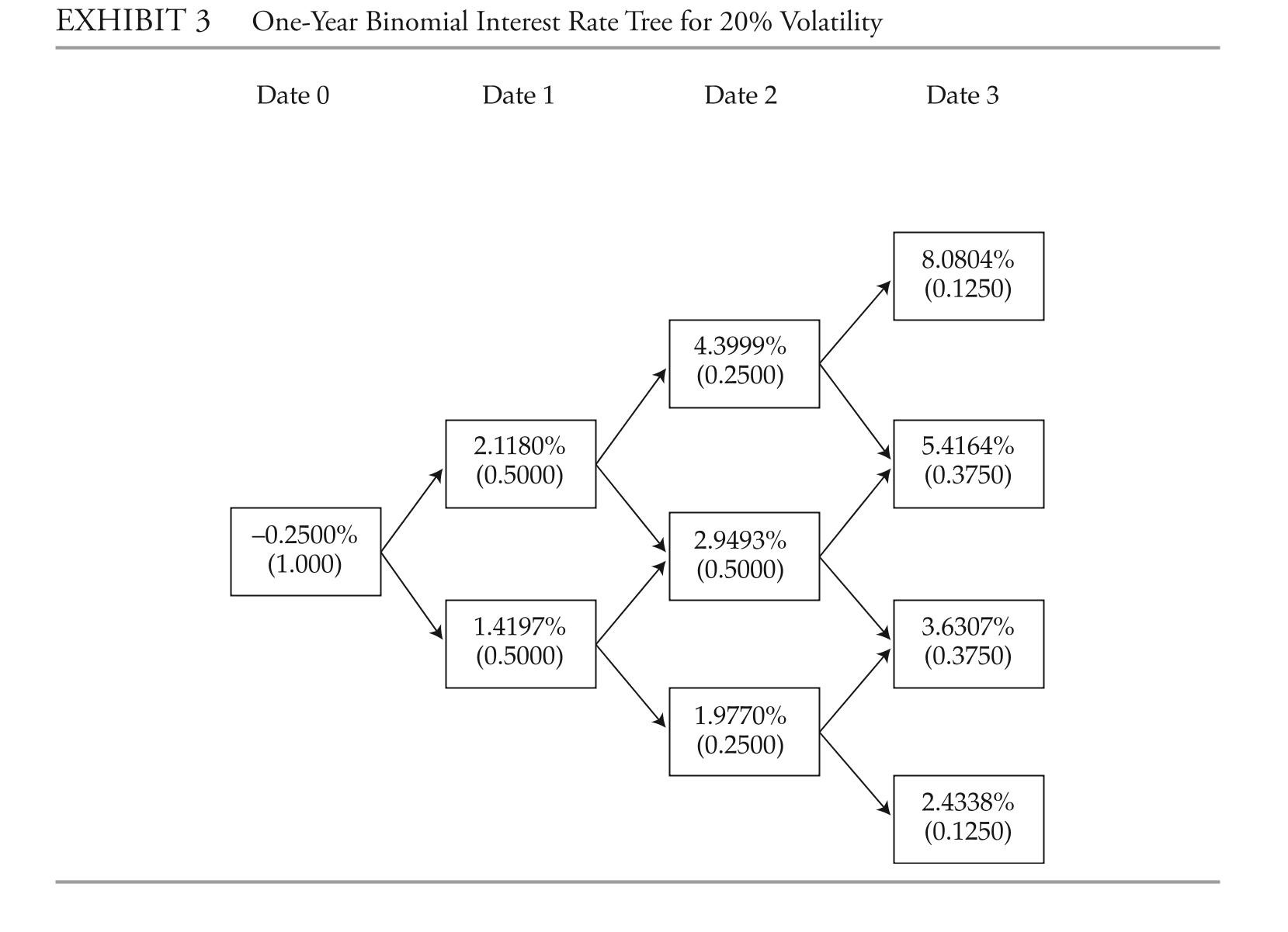Multiple Choice
The following information relates to Questions
daniela ibarra is a senior analyst in the fixed-income department of a large wealth manage-ment firm. Marten Koning is a junior analyst in the same department, and david lok is a member of the credit research team.
The firm invests in a variety of bonds. ibarra is presently analyzing a set of bonds with some similar characteristics, such as four years until maturity and a par value of €1,000. exhibit 1 includes details of these bonds.
exhibit 1 a brief description of the bonds being analyzed bond descriptionb1 a zero-coupon, four-year corporate bond with a par value of €1,000. The wealth management firm's research team has estimated that the risk-neutral probability of default (the hazard rate) for each date for the bond is 1.50%, and the recovery rate is 30%.b2 a bond similar to b1, except that it has a fixed annual coupon rate of 6% paid annually.
b3 a bond similar to b2 but rated aa.
b4 a bond similar to b2 but the coupon rate is the one-year benchmark rate plus 4%.ibarra asks Koning to assist her with analyzing the bonds. She wants him to perform the analysis with the assumptions that there is no interest rate volatility and that the government bond yield curve is flat at 3%.ibarra performs the analysis assuming an upward-sloping yield curve and volatile interest rates. exhibit 2 provides the data on annual payment benchmark government bonds.1 She uses these data to construct a binomial interest rate tree (shown in exhibit 3) based on an assump-tion of future interest rate volatility of 20%.
1 For simplicity, this exhibit uses
 answer the first five questions (1-4) based on the assumptions made by Marten Koning,the junior analyst. answer questions (8-12) based on the assumptions made by daniela ibarra, the senior analyst.
answer the first five questions (1-4) based on the assumptions made by Marten Koning,the junior analyst. answer questions (8-12) based on the assumptions made by daniela ibarra, the senior analyst.
Note: all calculations in this problem set are carried out on spreadsheets to preserve reci-sion. The rounded results are reported in the solutions.
-bond b3 will have a modified duration of 2.75 at the end of the year. based on the rep- resentative one-year corporate transition matrix in exhibit 7 of the reading and assuming
No default, how should the analyst adjust the bond's yield to maturity (ytM) to assess the
Expected return on the bond over the next year?
A) add 7.7 bps to ytM.
B) Subtract 7.7 bps from ytM.
C) Subtract 9.0 bps from ytM.
Correct Answer:

Verified
Correct Answer:
Verified
Q3: The following information relates to Questions
Q4: The following information relates to Questions
Q5: The following information relates to Questions
Q6: The following information relates to Questions
Q7: The following information relates to Questions
Q9: The following information relates to Questions
Q10: The following information relates to Questions
Q11: The following information relates to Questions
Q12: The following information relates to Questions
Q13: The following information relates to Questions